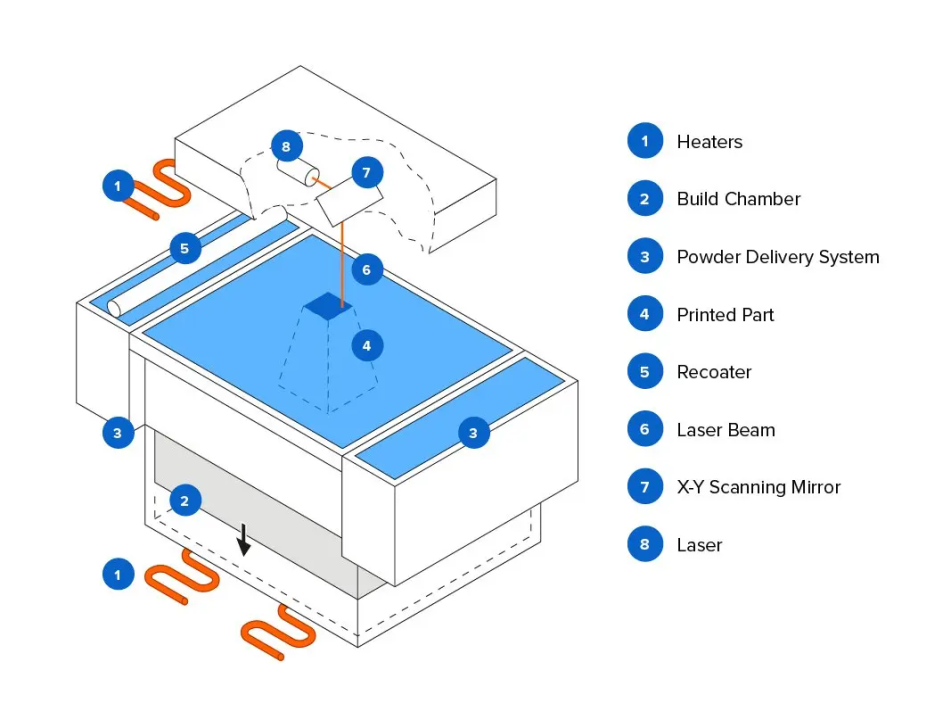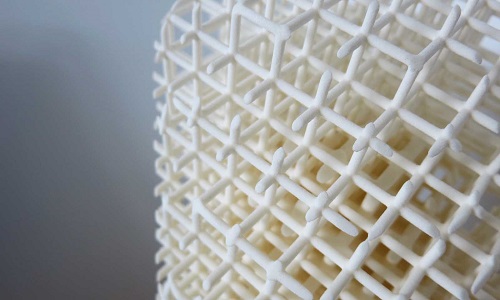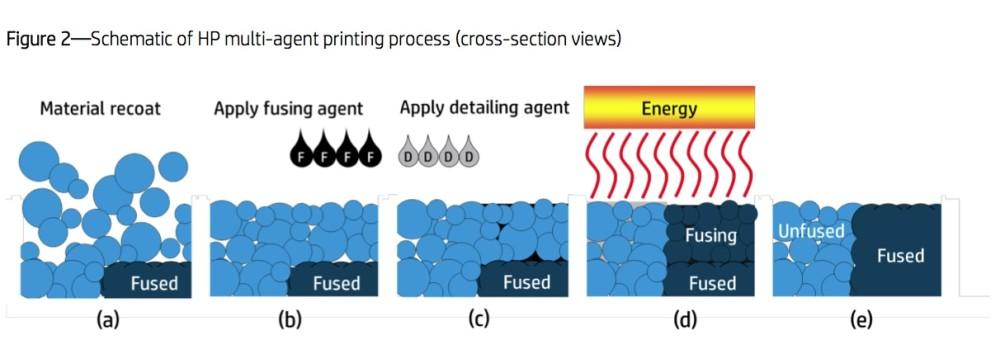In the ever-evolving landscape of manufacturing, companies are constantly seeking innovative techniques to produce high-quality parts with intricate designs. Powder bed fusion (PBF) 3D printing has emerged as a groundbreaking technology. By selectively melting layers of powder together using a heat source, PBF enables the creation of complex geometries, functional prototypes, and end-use parts with unparalleled precision.
Unveiling the Power of SLS and MJF
Selective laser sintering (SLS) and Multi Jet Fusion (MJF) are two prominent PBF technologies that have transformed the manufacturing industry. Now dominated by 3D Systems and EOS, SLS utilizes a laser beam to melt and fuse polymer powder, while MJF employs a combination of fusing and detailing agents to build parts layer by layer. It’s worth noting that there are other technologies related to MJF, Selective Absorption Fusion, offered by Stratasys, and High Speed Sintering, offered by voxeljet. Because these are all trade names, we’ll refer to this process as MJF, since HP’s variety was the first that was commercially available. Both SLS and MJF offer exceptional capabilities:
SLS:
- High-quality polymer parts: SLS produces parts with exceptional surface finish, accuracy, and dimensional stability.
- Wide range of materials: SLS can process a variety of polymers, including various nylons, and thermoplastic polyurethane (TPU).
- Complex geometries: SLS excels at creating intricate designs with internal cavities, overhangs, and intricate details.
MJF:
- The fastest PBF technology: MJF offers what may be the fastest build speed among PBF technologies, reducing production time significantly.
- Smooth surface finish: MJF parts exhibit a smooth finish reducing the need for post-processing as the parts are often ready for end use after removing the excess powder.
- Wide range of materials: MJF can process a variety of polymers, including various nylons, polypropylene and thermoplastic polyurethane (TPU).
- Best in-class isotropy: Yielding up to 98% isotropy in all parts
Advantages of Polymer PBF
The allure of PBF 3D printing lies in its unique advantages that set it apart from traditional manufacturing methods:
- Unparalleled Design Freedom: PBF empowers engineers to unleash their creativity, designing parts with complex geometries that would be challenging or impossible to produce using conventional methods or even many other additive manufacturing techniques.
- Exceptional Accuracy and Precision: PBF produces parts with exceptional dimensional accuracy and surface finish, ensuring precise fit and function in demanding applications.
- Reduced Waste and Environmental Impact: Unlike traditional manufacturing, PBF minimizes waste generation by utilizing unused powder for subsequent prints, reducing material consumption and environmental impact.
- Tool-less Manufacturing: PBF eliminates the need for expensive tooling, saving time and resources, particularly for small-batch production or prototyping.
- Streamlined Production: PBF offers a streamlined production process, from digital design to finished part, reducing lead times and enabling rapid prototyping and product development.
- Full-scale Production: MJF offers one of the only platforms that has a throughput to handle full-scale production. With the ability to print hundreds or even thousands of parts per day MJF is likely the fastest PBF process currently.
Applications for PBF 3D Printing
PBF 3D printing has found widespread adoption across various industries, revolutionizing the way parts are designed, manufactured, and utilized:
- Aerospace: PBF is used to create lightweight, high-strength components for aircraft, satellites, and spacecraft.
- Automotive: PBF produces durable, custom-made parts for automotive components, tools, and prototypes.
- Medical: PBF enables the creation of patient-specific implants, prosthetics, and surgical guides.
- Consumer Products: PBF is employed to manufacture complex, functional parts for consumer electronics, appliances, and toys.
Conclusion
Powder bed fusion 3D printing has emerged as a transformative technology, empowering companies to manufacture high-quality, complex parts with unparalleled precision and design freedom. Its versatility, efficiency, and environmental benefits make it an invaluable tool for a wide range of industries. As PBF technology continues to evolve, it is poised to further revolutionize the manufacturing landscape, enabling the creation of innovative products that were once unimaginable.
Feature image courtesy of Formlabs.
Subscribe to Our Email Newsletter
Stay up-to-date on all the latest news from the 3D printing industry and receive information and offers from third party vendors.
You May Also Like
3D Printing Unpeeled: Biofuel Waste to Filament & Sustainable Photopolymers
I can’t ever remember a day with so many potentially high impact news stories have come out. In one story, we all know that there are problems with the safety...
Finnair Hires AM Craft to 3D Print Plastic Parts for Aircraft Interiors
Riga-based AM Craft, a supplier specialized in 3D printing aviation components and certified under EASA Part 21G, announced a significant achievement today. The company will assist in upgrading Finnair’s A320...
3DPOD Episode 198: High Speed Sintering with Neil Hopkinson, VP of AM at Stratasys
Neil Hopkinson, a pioneering 3D printing researcher, played a pivotal role in developing a body of research that is widely utilized today. He also invented High Speed Sintering (HSS), also...
3D Printing Webinar and Event Roundup: May 12, 2024
Webinars and events are picking up in the AM industry this week! ASTM International continues its Professional Certificate Course and Stratasys continues its advanced in-person trainings, while 3D Systems is...



































